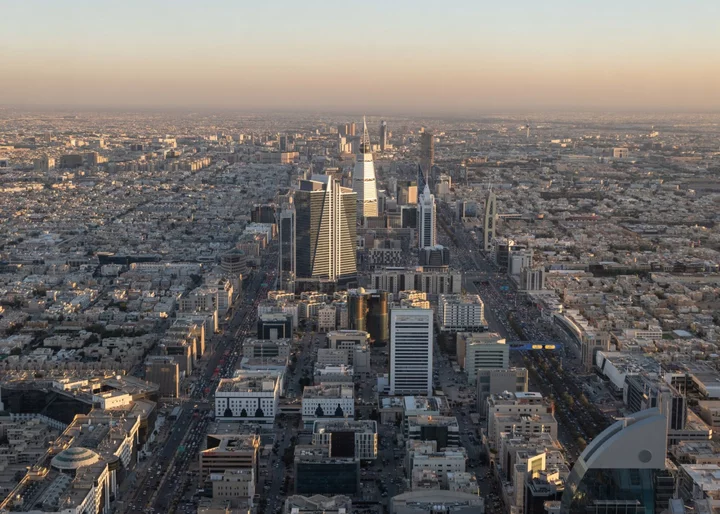Saudi Arabia posted a budget deficit in the third quarter that was almost seven times larger than in the previous three months, as the world’s biggest crude exporter endured a decline in both energy and non-oil income.
The government’s shortfall came in at 35.8 billion riyals ($9.5 billion) in the three months ended in September, according to a budget report from the Ministry of Finance published late Wednesday.
An 8% decline in expenditure to about $78 billion was outpaced by an almost 18% decrease in revenues that were $69 billion, largely due to lower receipts from oil and taxes. The quarterly deficit was more than twice as large as in the same period of 2022.
Saudi Arabia’s $1.1 trillion economy suffered its biggest contraction since 2020 during the third quarter, after the kingdom cut oil production in July in a bid to push up prices. Output is now around 9 million barrels a day, about 1 million below the average over the past decade, and expected to remain at similar levels until at least the end of this year.
Read More: Saudi Budget’s Back to Old Ways as Oil Habit Proves Hard to Kick
Oil revenues declined 18% to 147 billion riyals during July-September, according to the budget report. Income from non-oil decreased 17% to 112 billion riyals.
What Bloomberg Economics Says...
“The price Saudi Arabia needs to balance its budget was clearly above $86 in the third quarter. We estimate that Saudi Arabia needs oil at $91 per barrel to avoid a budget deficit in the second half of the year. And an even higher price if we account for spending by the sovereign wealth fund.”
— Ziad Daoud, chief emerging-markets economist. For more, read here.
The International Monetary Fund said last month Saudi Arabia would need crude close to $86 per barrel to balance its budget, about $5 more than the Washington-based lender had estimated in May. If outlays by the Saudi sovereign wealth fund are included, the breakeven will likely rise to $110 in the second half of this year, according to Bloomberg Economics.
Global benchmark Brent rose past $85 a barrel on Thursday, after falling about 5% over the previous three sessions
In October’s pre-budget statement, the Saudi Finance Ministry outlined plans to boost spending as part of Crown Prince Mohammed bin Salman’s program to transform the economy. The latest blueprint now assumes fiscal shortfalls through at least 2026.

